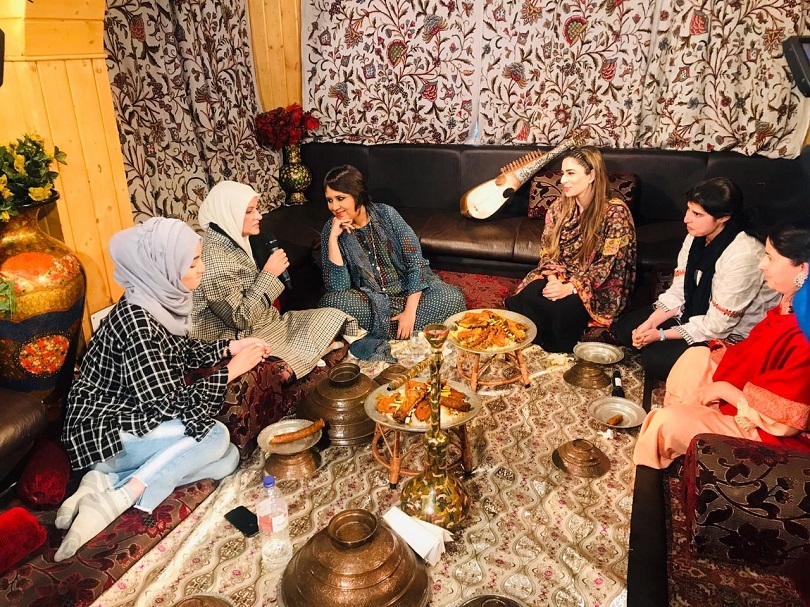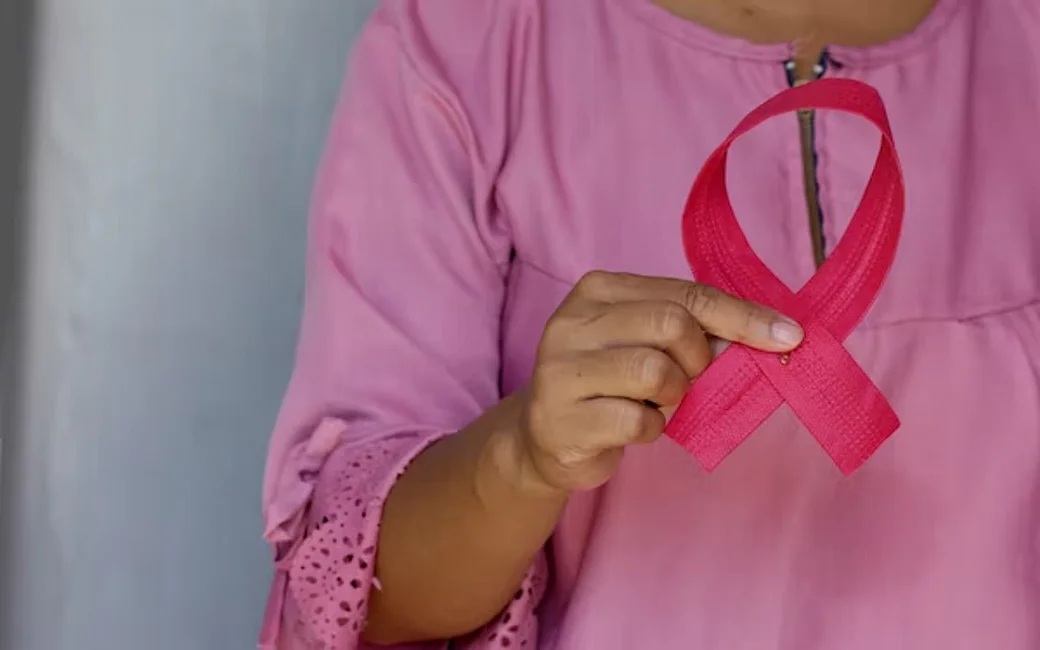
AGAINST the backdrop of Kashmiri Rabab music and a lavish spread of wazwan, Barkha Dutt, in her recent documentary, “We the women of Kashmir”, introduces a group of Kashmiri women to her audience, as a newly discovered prize. The five upwardly mobile Kashmiri women from different professional backgrounds were presented as people with no agency outside of this exposure by an Indian journalist, their savior, who was making it possible to let them be heard. In fact, at some point in the film, Dutt even looks straight at the camera asking the authorities, to take note of demands of some of the women, such as the young sports star. This documentary presenting female perspectives from Kashmir, which was cleverly tied into an electoral discussion, really seems to have served a different agenda.
With the help of an Indian celebrity journalist who dubs herself as an almost Kashmiri, the participants raised a number of issues in this documentary, some very genuine and serious. Not to undermine or ignore the substance of the stories of these participants, it is important to acknowledge the reality of these women, and to admit that there is much truth to the problems that were highlighted by them. It is important to name a few societal issues raised by them: attitudes towards female children in some families, abuse of religion to perpetrate misogyny and patriarchy, sexual abuse and harassment, existence of domestic violence and absolute lack of infrastructure to support victims, lack of support for women in new and non-traditional professions, societal judgement of new and different forms of female employment, and lack of avenues for women to gather, network, and support each other. What I found lacking was a discussion of solutions to these problems, especially solutions that these same women, and others, have come up with to help bring about a change within. Ironically, they all seemed to be looking at Dutt as someone who had a magic wand to help them while completely undermining their own agency, and most of all, their own contributions. These highly intelligent and contributing members of Kashmiri society, who clearly are trend setters and pioneers in many ways, on camera, seemed deficient in self-confidence as change makers, yet change makers they are.
The most intriguing part of this whole episode was the insistence of some of the participants to define their lives separate from the reality of the conflict of Kashmir, perhaps a utopia that somehow exists in their upper class reality. Even the existence of family violence and other forms of gender violence were to be treated as byproducts of misogyny and patriarchy alone, and not to be in any way viewed through the reality of situation in Kashmir. I wondered about such distancing. Is it really possible for an average Kashmiri woman to define her identity by disassociating from the circumstances she is surrounded by? It may be fine for some of these women to be apolitical because their everyday lives are not impacted by factors that their sisters from the villages of Kashmir, or even those who come from different socio economic backgrounds, are influenced by. But, to suggest that Kashmiri women operate in a specific framework without mention of conflict, was naïve at best. It was laughable to hear one of the participants justifying her intelligence to the audience as if intelligent and educated Kashmiri women is a new phenomenon, a discovery made by Dutt.
As I ponder on the different perspectives and multiple realities in which Kashmiri women live, it is fair to ask, who can represent whom? I can see why there is fatigue over Kashmiris being constantly represented as victims of the political conflict. Yet, the participants of this program, unwittingly, admitted to being victims of a social and a political system that is defined by conflict. The fact a young sports star can work hard and become an international celebrity in spite of all of the pressures imposed on her, is commendable. Living in the heart of most conflict ridden part of the Valley and training amidst difficult circumstances, in itself speaks to the resilience and brilliance of this young Kashmiri. These women through their choices of becoming writers, social workers, doctors, advocates, sportswomen, and even celebrity makeup artists, have proven that conflict does not define Kashmiri women. What it does do though, whether they admit it or not, is shape their lived experience quite apart from those who never know what living under oppression looks like.
So as Dutt tries to save Kashmiri women, it is important to ask, what these women are being saved from? As Kashmiri women, it is time to think if we are a monolith that should be represented only one way, or does diversity of our lived experiences add to our rich history. Using conflict to justify prevalent gender violence within the society is as wrong as to present the existent gender violence in a vacuum. It is important that as Kashmiri women we see through the pretence of efforts against Muslim misogyny as genuine care for Muslim women. Let us not ignore the struggles of ALL women of Kashmir who are and have traditionally been at the fore front of issues be it inside their homes, in the field of education, business, medicine, social work, and so on. Moreover, it is important that we never forget the genuine struggles of many Kashmiri women against oppression in all its forms, often at the cost of their lives, and honour, and while enduring indescribable loss. Kashmiri women need to stand in solidarity and not be silenced or coopted by people within, or without.
To Ms. Dutt, a leading journalist of India, and one who has a massive global social media following, I would say in Chimamanda Ngozi Adichie’s words, there is always danger of a single story. To avoid cultural misrepresentation and imperialist overtones of feminism, it may be best for her to seek out a cross section of Kashmiri women in her future segments. Her audiences should be introduced to women who have survived immense torture, pain, and loss, especially women from the villages of Kashmir, the poor and illiterate, the matriarchs, the wise elders, and the young. These survivours, who in spite of their suffering, have much to teach the rest of the world, especially within the region. The stories of these women, even within Kashmir, have been forgotten. It is incumbent on those of us who may be socially, economically, and professionally mobile to never de-link our stories from the overarching reality of those who are also one of the faces of Kashmiri women. Many of these women have been treated as research subjects to serve an agenda of a different kind of an exploitative narrative, and then, forgotten. The real lesson from their stories should humble us. It should drive us to alleviate their pain and suffering by, at least, listening to their stories, and keeping these stories alive. And, above all, by standing in solidarity with them.
There is need for Kashmiri women across sectors to form alliances and build coalitions. These alliances will necessarily have to be different than the project that serves the agenda of normalization of Kashmir through the Indian electoral processes. Until then, it may be unwise to allow others to define our reality. Every Kashmiri woman’s story is inextricably interwoven with ever present conflict in the world’s highest militarized zone Kashmir.
Follow this link to join our WhatsApp group: Join Now
Be Part of Quality Journalism |
Quality journalism takes a lot of time, money and hard work to produce and despite all the hardships we still do it. Our reporters and editors are working overtime in Kashmir and beyond to cover what you care about, break big stories, and expose injustices that can change lives. Today more people are reading Kashmir Observer than ever, but only a handful are paying while advertising revenues are falling fast. |
| ACT NOW |
| MONTHLY | Rs 100 | |
| YEARLY | Rs 1000 | |
| LIFETIME | Rs 10000 | |











